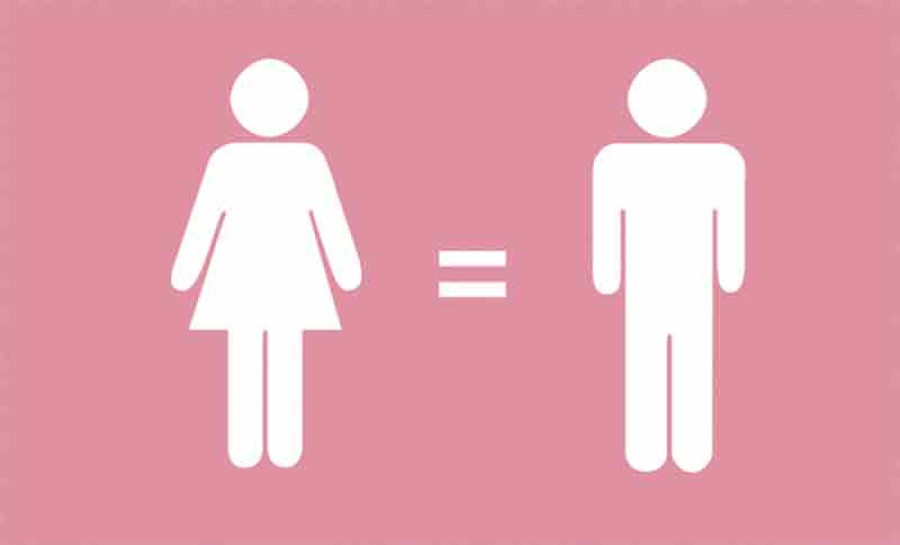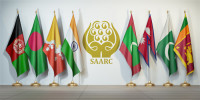Opinion
Making room for women
Nepal aims to become a middle income country by 2030. In coordination with the National Planning Commission, the government started working towards achieving the 17 Sustainable Development Goals (SDGs) in 2016 and aspired that no one would be left behind while eradicating poverty and promoting prosperity.
Sapana Phuyal
Nepal aims to become a middle income country by 2030. In coordination with the National Planning Commission, the government started working towards achieving the 17 Sustainable Development Goals (SDGs) in 2016 and aspired that no one would be left behind while eradicating poverty and promoting prosperity.
The largest women’s movement included 250 marches in the US and overseas as women took to the streets to demand equal rights and dignity, making waves around the world. Hollywood is advocating the ‘Times Up’ movement against gender-based violence in the entertainment sector. Sexual abuse allegations recently flooded twitter, telling us that women all over the world suffer through inequality together.
What these movements have shown is that inequality is prevalent even in developed countries. Progress is slow in all areas of the world. So this presents one question that needs to be answered: Is it possible to achieve the SDGs by 2030, and particularly that goal which pertains to gender equality?
Glaring gender inequalities exist in every sector, from policy making to mplementation. They exist despite the fact that substantial measures have been taken towards achieving gender equality. Goal five of the SDGs aims to “achieve gender equality and empower all women and girls”. One hundred and ninety-three member states of the United Nations have signed this charter.
The Government of Nepal has expressed commitment towards achieving gender equality, as shown by the provisions in the newly adopted constitution of Nepal. The constitution envisions Nepal as an inclusive state through the guarantee of gender equality. But achieving gender inclusion is a persistent challenge in Nepal on multiple dimensions.
The literacy rate of women stands at 65.9 percent according to the Central Bureau of Statistics 2011, yet women are still confined to domestic chores. The average amount of hours spent doing domestic work by women is 14 hours per day. Although women constitute 55 percent of the national work force, there are still many who are responsible for unpaid, informal household chores. Those who work are generally paid much less than what male workers are paid, despite being equally skilled and capable.
Now, the constitution stipulates that 33 percent of the seats be allocated to women in political and civil service. This is a key factor to achieving the inclusion of women. However, while such a stipulation exists, it is far from being put into practice. Only 19.3 percent of those who serve in civil service are women, while the remaining 81 percent are men. So despite attempts at progress, gender discrimination is yet prevalent. Now, gender equality must be made into a national priority to fuel both human development and economic progress.
The number of women in executive government and in parliament is not satisfactory, with marginal improvements according to the data in Women in Politics 2017 Inter-parliamentary Union. Nepal ranked 47th in “Women members of Parliament” among 190 countries. The presence of women in parliament was limited at 29.8 percent. The constitution stipulates that 33 percent of the members in parliament have to be women, but this is far from the case.
In the first ever provincial elections, the gender ratio was skewed; only 18 women (3.3 percent) were elected out of a total of 550 members in the seven provincial assemblies. However, the political parties ensured that there was 33 percent women representation through the proportional representation quotas.
Empowering women and girls does not only entail bringing an end to physical and sexual violence, it should also entail boosting the economic growth, and creating equal opportunities for leadership at all levels of decision-making. The sustainable development agenda will need to look beyond gender impartiality for an economically, environmentally and socially sustainable future. Studies by the UN and World Bank show that focusing on women in development assistance and poverty reduction strategies leads to faster economic growth than “gender neutral approaches”. Moreover, the evidence of gender discrimination is rooted in history, tradition, and culture. Gender inequality is a highly debilitating stigma and leads to demerits of women’s psychology, and of their worth and dignity to themselves and to society.
To promote gender equality, there need to be increased education for women, improvements in public health, more child care facilities, and equal representation of women’s voice in policy making institutions. Gender equality benefits the world as a whole.
Phuyal is a sub-editor at Kantipur Television




 9.12°C Kathmandu
9.12°C Kathmandu










